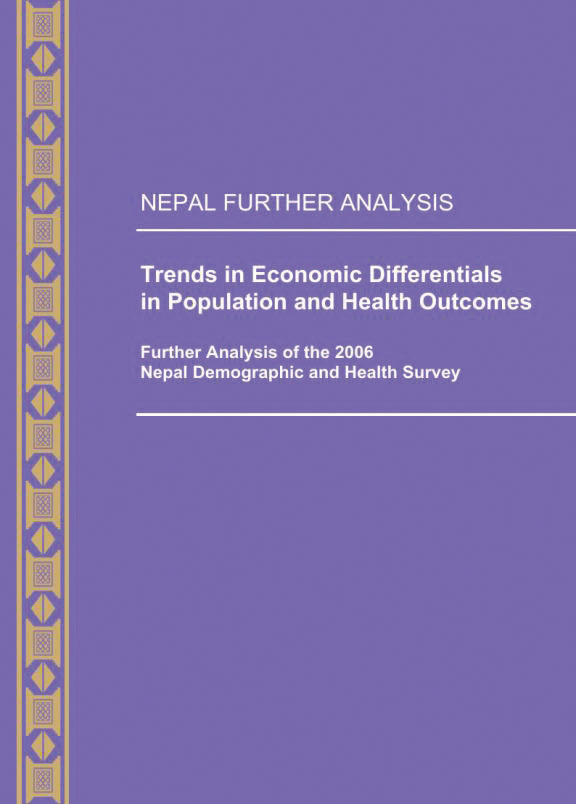- PUBLICATIONS
- JOURNAL ARTICLES
- ORDER PUBLICATIONS
Publications Summary
- Document Type
- Further Analysis
- Publication Topic(s)
- Child Health and Development, Fertility and Fertility Preferences, Household and Respondent Characteristics, Maternal Health, Wealth/Socioeconomics
- Country(s)
- Nepal
- Survey
- Nepal DHS, 2006
- Language
- English
- Recommended Citation
- Johnson, Kiersten and Sarah E.K. Bradley. 2008. Trends in Economic Differentials in Population and Health Outcomes: Further Analysis of the 2006 Nepal Demographic and Health Survey. DHS Further Analysis Reports No. 53. Calverton, Maryland, USA: Macro International
- Download Citation
- RIS format / Text format / Endnote format
- Publication Date
- May 2008
- Publication ID
- FA53
Download
 Trends in Economic Differentials in Population and Health Outcomes (PDF, 635K)
Trends in Economic Differentials in Population and Health Outcomes (PDF, 635K)
Download this publication
There is no printed copy available to order.
